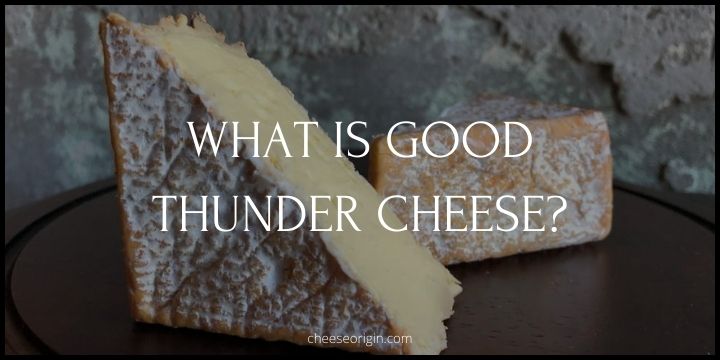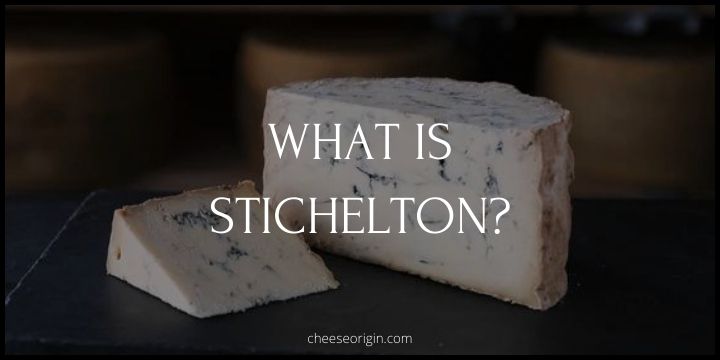What is Cabrales? Spain’s Artisan Blue Cheese Delight
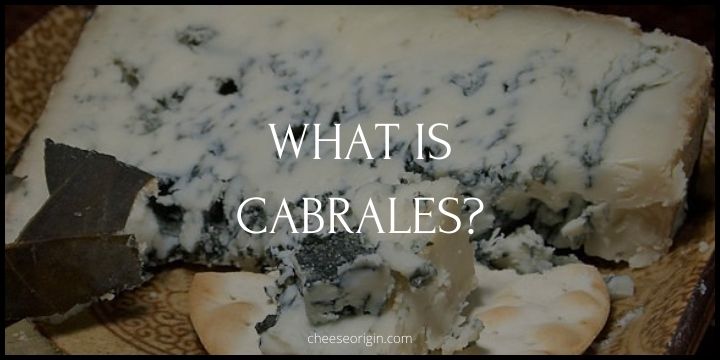
Nestled in the lush, green landscapes of Spain’s Asturias region, lies a culinary treasure known as Cabrales, a testament to the country’s rich cheese-making heritage. This artisan blue cheese, crafted with a blend of raw cow’s, goat’s, and sheep’s milk, is a gastronomic delight for cheese enthusiasts worldwide.
Aged meticulously in natural limestone caves, Cabrales offers a profound depth of flavor, balancing sharpness with a delightful creaminess. Each bite takes you on a journey through its rustic origins, embodying the essence of Spanish cuisine in its truest form.
Quick Facts About Cabrales
| Fact Category | Details |
|---|---|
| Origin | Asturias, Spain |
| Cheese type | Blue cheese |
| Milk source | Cow, goat, and sheep milk |
| Texture | Semi-hard to hard |
| Aging time | Between 2 to 6 months |
| Color | White to yellowish with blue/green veins |
| Flavor | Strong, spicy, slightly acidic, complex |
| Aroma | Intense, pungent |
| Production | Traditional, artisanal |
| Maturation | In natural limestone caves |
| Designation | Protected Designation of Origin (PDO) since 1981 |
| Pairings | Red wine, sherry, dried fruits, hearty breads |
| Uses | Table cheese, in salads, with fruit, melted in dishes |
What is Cabrales?
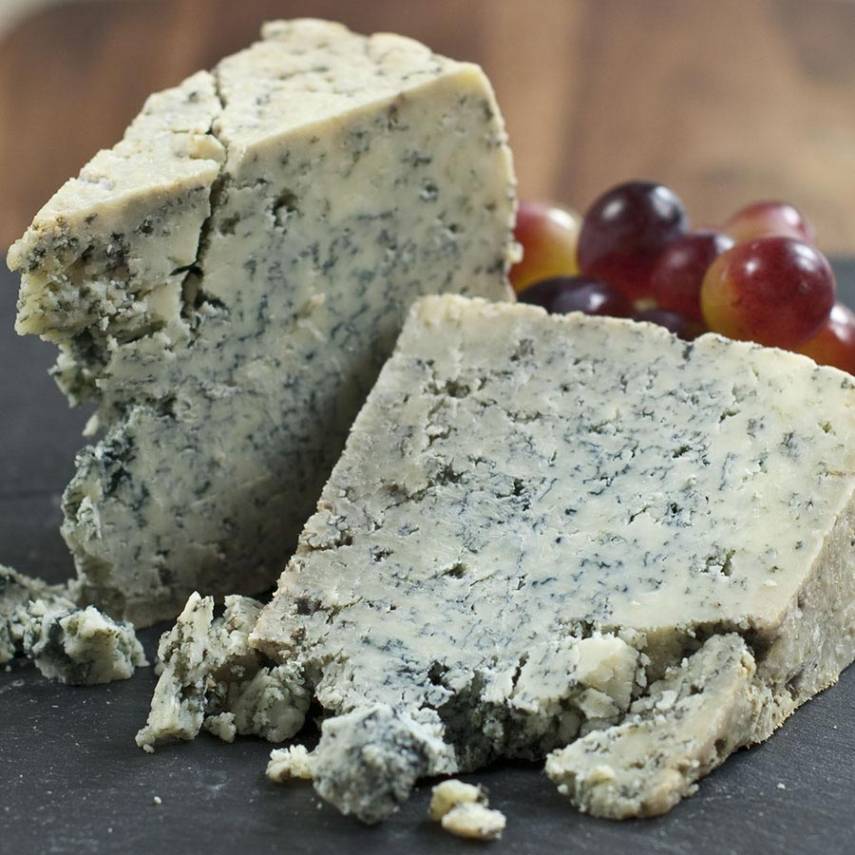
Cabrales, a name that echoes through the deep valleys of Asturias, Spain, is not just a cheese—it’s a testament to the region’s rich gastronomic tradition. Tucked away in the verdant northwestern corner of Spain, Asturias is known for its pristine landscapes, and it’s here, in the depths of limestone caves, that the magic of Cabrales cheese unfolds.
This artisanal blue cheese is a symphony of flavors, its notes composed from the milk of cows, sheep, and sometimes goats. The blend depends on the season, creating a unique taste profile that varies subtly throughout the year. The milk is uncooked and unpressed, allowing the curds to retain their natural, earthy essence.
But it’s during the maturation process that Cabrales truly comes into its own. The cheese wheels are carefully nurtured in natural caves, where the cool, humid conditions allow Penicillium mold to work its magic. Over two to six months, the mold permeates the cheese, creating striking blue-green veins that add a potent kick to the creamy, crumbly texture.
Tasting Cabrales is an adventure for the senses. Its intense aroma paves the way for a flavor that’s robust and complex, with a spicy, slightly acidic tang that lingers on the palate. It’s a cheese that demands your attention, whether you’re savoring it with a glass of full-bodied red wine, pairing it with crisp apples and hearty bread, or melting it into a sauce to transform a humble dish into a culinary masterpiece.
In a world of cheeses, Cabrales stands out. It’s a tribute to the art of cheesemaking, a celebration of regional biodiversity, and a sensory experience that leaves a lasting impression. Truly, Cabrales is much more than a cheese—it’s a slice of Asturian heritage.
What Does Cabrales Taste Like?
Cabrales is known for its robust and complex flavor profile. The initial taste of Cabrales can be sharp, spicy, and slightly acidic, which then unfolds into a rich, creamy, and buttery sensation on the palate. The strong, piquant notes are the result of the blue mold veins running through the cheese, a characteristic feature of blue cheeses.
Despite its intensity, Cabrales has a balanced flavor that is not overpowering. It has a certain earthiness, a hint of the natural caves where it matures. Hints of the grass and flowers, consumed by the cows, goats, or sheep whose milk makes up the cheese, can also subtly come through in its flavor.
The aftertaste of Cabrales lingers, leaving a savory and slightly tangy impression that invites you to take another bite. It’s a cheese that can be enjoyed on its own to appreciate its full flavor, or paired with fruits, nuts, or wines to create interesting taste combinations.
Cabrales Tasting Notes
- Initial Taste: Sharp, spicy, and slightly acidic
- Texture: Rich, creamy, and buttery
- Intensity: Strong but not overpowering
- Complexity: Earthy undertones with a hint of natural caves where it matures
- Subtleties: Hints of grass and flowers from the animals’ diet subtly come through
- Aftertaste: Savory and slightly tangy, with a lingering impression
How to Eat Cabrales?
- Cheese Board: Serve Cabrales on a cheese board with a variety of other cheeses to highlight its unique flavor.
- Pairings: Pair it with fruits like apples and pears, or nuts like almonds and walnuts for a delightful contrast in flavors.
- Wine Companion: Enjoy Cabrales with a glass of full-bodied red wine, such as a Spanish Rioja or a robust Ribera del Duero.
- Cooking Ingredient: Melt Cabrales into sauces or soups to add depth and complexity to your dishes.
- Dessert Cheese: Pair Cabrales with a drizzle of honey or a chunk of dark chocolate for an unconventional but delicious dessert.
- Bread Companion: Spread Cabrales on a piece of crusty bread for a simple yet satisfying snack.
- Salad Topping: Crumble Cabrales over salads for an added kick of flavor.
- Grilled Meat Companion: Serve Cabrales alongside grilled meats for a bold combination of savory tastes.
10 Best Cabrales Substitutes
| Substitute | Origin | Short Description |
|---|---|---|
| Gorgonzola | Italy | A veined Italian blue cheese, it’s less pungent than Cabrales and has a nutty aroma. |
| Maytag | United States | This is an American farmhouse blue cheese that has a tangy, crumbly texture and a slightly peppery flavor. |
| Roquefort | France | Known as the ‘King of Cheeses’, Roquefort is a sheep milk cheese with a creamy texture and a sharp, tangy flavor. |
| Danablu | Denmark | Also known as Danish Blue, this cheese has a creamy, crumbly texture with a mild and slightly sweet flavor. |
| Stilton | United Kingdom | Often referred to as the King of English cheeses, Stilton is creamy and crumbly with a rich, bold flavor. It’s often used as a substitute for Cabrales. |
| Cambozola | Germany | This cheese is a combination of a French soft-ripened triple cream cheese and Italian Gorgonzola. It’s mild and creamy, with a hint of blue cheese tang. |
| Monte Enebro | Spain | A Spanish goat’s milk cheese with a creamy, tangy flavor and a hint of blue cheese ‘bite’. |
| Valdeón | Spain | This is a less intense Spanish blue cheese and is often considered a good alternative to Cabrales. It’s made from a mix of cow’s, goat’s, and sheep’s milk. |
| Bejes-Tresviso | Spain | This is a Spanish blue cheese that is similar to Cabrales but has a slightly milder flavor. |
| Gamonedo | Spain | Another Spanish cheese, Gamonedo is smoked and has a unique flavor profile that can serve as an alternative to Cabrales. |
What Pairs Well With Cabrales?
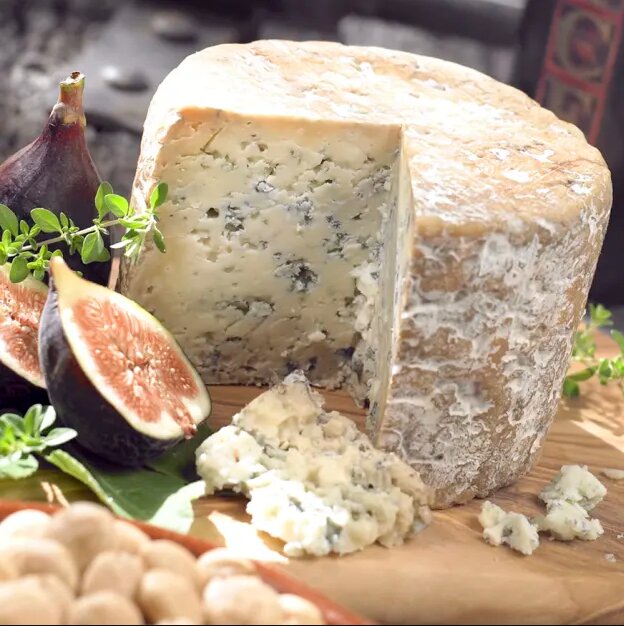
Food that goes well with Cabrales:
| Category | Food |
|---|---|
| Breads | Rustic bread, Baguette, Walnut bread |
| Fruits | Apples, Pears, Grapes, Figs |
| Nuts | Almonds, Walnuts, Pecans |
| Meats | Chorizo, Prosciutto, Grilled Steak |
| Seafood | Anchovies, Sardines, Grilled Salmon |
| Desserts | Dark Chocolate, Honey, Dried Fruits |
| Vegetables | Roasted Peppers, Olives, Pickles |
| Condiments | Fig Jam, Quince Paste, Apple Jelly |
| Sauces | Blue Cheese Sauce, Mushroom Sauce, Red Wine Reduction |
| Salads | Mixed Greens, Arugula, Spinach with Balsamic Vinaigrette |
Also read: What Fruit Goes on a Charcuterie Board?
Beverage that goes well with Cabrales:
| Category | Beverage |
|---|---|
| Red Wines | Spanish Rioja, Ribera del Duero, Cabernet Sauvignon |
| White Wines | Rueda, Albariño, Chardonnay |
| Fortified Wines | Port, Sherry, Madeira |
| Dessert Wines | Sauternes, Ice Wine, Moscato d’Asti |
| Beers | Belgian Trappist Beers, English Stouts, American IPA |
| Ciders | Spanish Cider, French Cider, Dry English Cider |
| Spirits | Brandy, Whisky, Armagnac |
| Non-Alcoholic | Sparkling Water, Apple Juice, Grape Juice |
Also read: Best Wine and Cheese Pairings: The Ultimate Guide
Frequently Asked Questions
1. What does Cabrales mean in English?
“Cabrales” doesn’t have a direct translation in English because it’s a proper noun. The cheese is named after the municipality of Cabrales where it originated.
2. Is Cabrales a hard cheese?
No, Cabrales is not considered a hard cheese. It is typically classified as a semi-hard, blue cheese.
Also read:
- What is Picos de Europa? Spain’s Blue Cheese Gem
- What is Monte Enebro? The Tangy Temptation
- What is Stichelton? The True Stilton’s Alternative
- What is Dubliner Cheese? From Irish Pastures to Global Tables
- What is Labneh Cheese? A Middle Eastern Culinary Secret
- What is Roncal? A Taste of Spanish Heritage
- What is Cheshire Cheese? A Timeless British Delight
